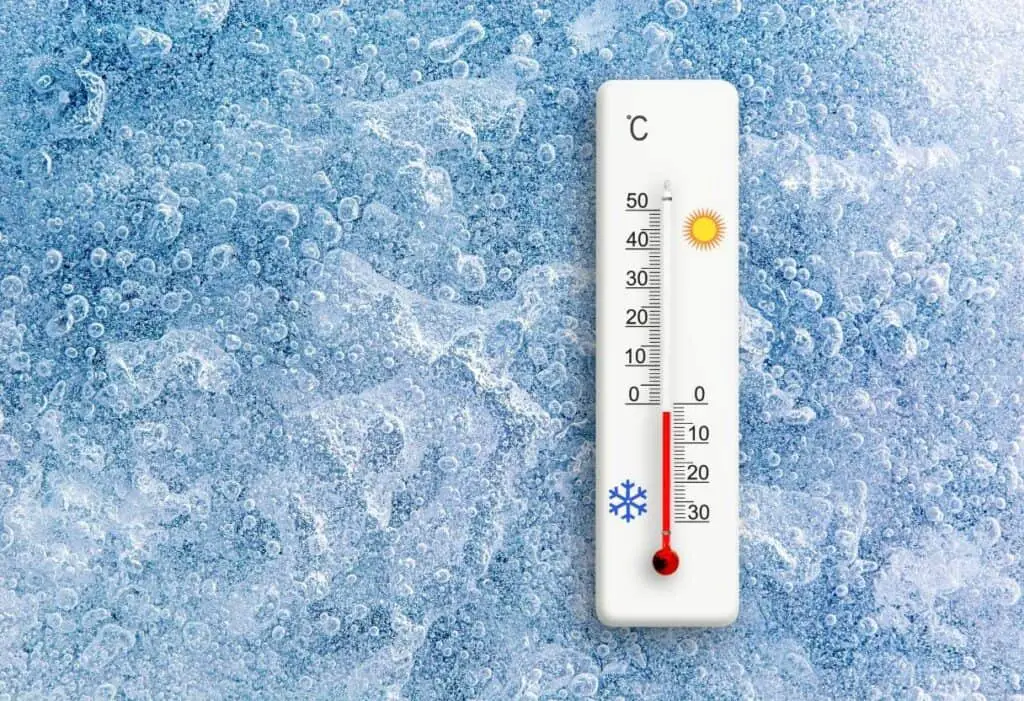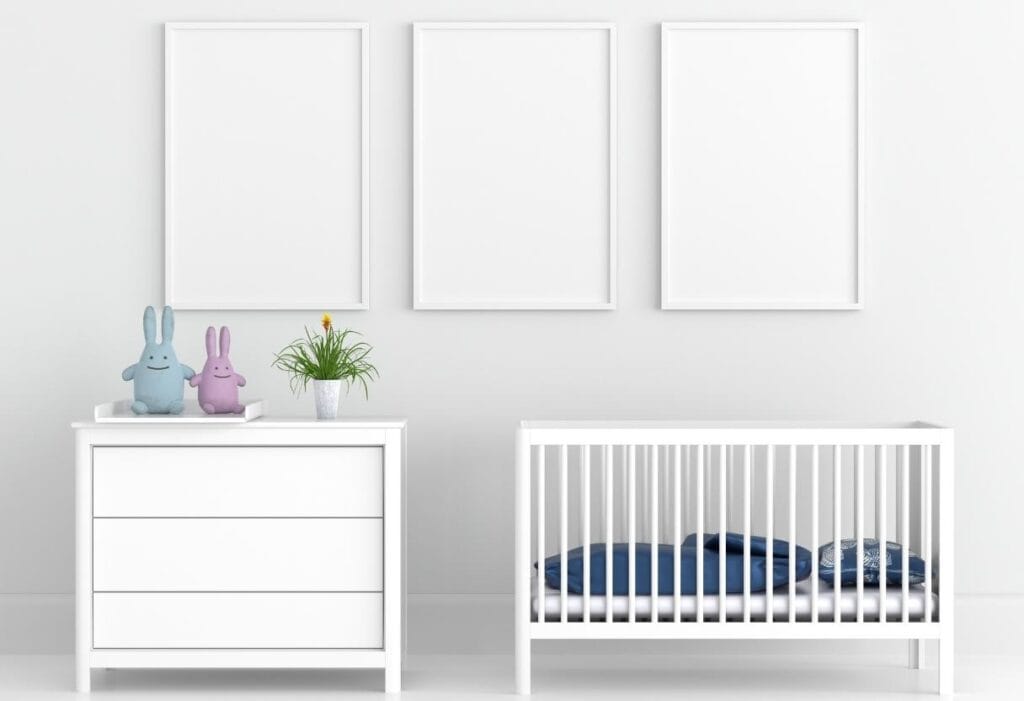The Impact of Room Temperature On Sleep Quality
Maintaining a comfortable room temperature is essential for getting a good night’s sleep. The ideal temperature for sleep ranges between 60-67°F (15-19°C) according to research from the Sleep Foundation. Temperature affects our body’s natural thermoregulation process, which can lead to discomfort and difficulty falling asleep when the room temperature is too high or too low.

Sleep quality is influenced by various environmental factors, including room temperature, ventilation, humidity, and lighting. These factors affect our circadian rhythm, which regulates our sleep-wake cycle, and our thermoregulation, which controls our body temperature. Understanding how these factors impact sleep quality can help you create a sleep-friendly environment that promotes restful sleep.
Key Takeaways:
- Maintaining a comfortable room temperature between 60-67°F (15-19°C) is essential for getting a good night’s sleep.
- Environmental factors such as room temperature, ventilation, humidity, and lighting can affect our circadian rhythm and thermoregulation, which impact sleep quality.
- Creating a sleep-friendly environment that promotes restful sleep involves understanding how these environmental factors affect sleep and taking steps to optimize them.
Understanding Sleep Quality

Getting a good night’s sleep is essential for your overall health and wellbeing. Sleep quality refers to how well you sleep and how rested you feel after waking up. Quality sleep is characterized by a combination of factors, including sleep duration, sleep efficiency, and the number of times you wake up during the night.
Healthy sleep is important for many reasons. It helps to improve cognitive function, memory, and mood. It also plays a crucial role in maintaining a healthy immune system and preventing chronic diseases such as obesity, diabetes, and heart disease.
Sleep efficiency is an important aspect of sleep quality. It refers to the amount of time you spend asleep compared to the amount of time you spend in bed. A healthy sleep efficiency is considered to be around 85%. This means that if you spend 8 hours in bed, you should be getting around 6.8 hours of sleep.
There are many factors that can affect sleep quality, including room temperature. Research has shown that the ideal temperature for sleep is between 60-68°F. This range allows your body to regulate its temperature and helps you fall asleep faster and stay asleep longer.
In addition to room temperature, other factors that can affect sleep quality include noise, light, and stress. It’s important to create a sleep-friendly environment that promotes relaxation and comfort. This can include using blackout curtains, earplugs, and comfortable bedding.
Overall, sleep quality is an important aspect of your health and wellbeing. By understanding the factors that affect sleep quality, you can take steps to improve your sleep and wake up feeling rested and refreshed.
The Role Of Room Temperature In Sleep

The temperature of your bedroom plays a crucial role in your sleep quality. When the room temperature is too hot or too cold, it can disrupt your sleep patterns and lead to restless nights. The ideal temperature for sleep is between 60-68°F (15.5-20°C) according to Sleep Foundation.
Your body’s temperature naturally drops as you sleep, so a cooler room makes it easier to fall and stay asleep. On the other hand, a warmer room can make it difficult to fall asleep and may cause you to wake up during the night.
The microclimate of your bedroom is also important. This includes factors such as humidity, air circulation, and ventilation. High humidity levels can make the room feel stuffy and uncomfortable, while poor air circulation can lead to stagnant air and poor sleep quality.
To create an optimal sleep environment, it’s important to maintain a comfortable temperature and ensure good air circulation. You can achieve this by using a fan, opening windows, or investing in an air purifier.
In summary, the temperature and microclimate of your bedroom are important factors that can impact your sleep quality. By maintaining an ideal temperature and good air circulation, you can promote deep and restful sleep.
Circadian Rhythm & Thermoregulation

Your body has a natural internal clock called the circadian rhythm that regulates your sleep-wake cycle. This rhythm is influenced by various factors, including light exposure, physical activity, and temperature.
Research shows that your core body temperature decreases during the nocturnal sleep phase and increases during the wake phase repeatedly in a 24-hour circadian rhythm. Sleep is most likely to occur when your core body temperature decreases, while it hardly occurs during the increasing phases. [1]
Thermoregulation during sleep is a crucial factor in sleep quality. Your body’s temperature naturally drops as you sleep, so a cooler room makes it easier to fall and stay asleep. The ideal temperature for sleep is between 60-68°F. [2]
In homeothermic animals, sleep preparatory behaviors often promote thermal efficiency, including warmth-seeking, adopting particular postures, and nest building, all promoting warmer skin microclimates. Skin warmth induces NREM sleep and body cooling via circuitry that connects skin sensation to the preoptic hypothalamus. [3]
The stereotypical effects of heat or cold exposure are increased wakefulness and decreased rapid eye movement sleep and slow-wave sleep. These effects of the thermal environment on sleep stages are strongly linked to thermoregulation, which affects the mechanism regulating sleep. [4]
Overall, maintaining a comfortable room temperature is essential for a good night’s sleep.
Impact Of Ventilation & Humidity

The quality of air in your bedroom is critical to getting a good night’s sleep. Poor indoor environmental quality can lead to discomfort, respiratory problems, and sleep disturbances. Two important factors that affect the quality of air in your bedroom are ventilation and humidity.
Ventilation refers to the exchange of indoor and outdoor air. Proper ventilation helps remove stale air and pollutants from your bedroom, providing you with fresh and clean air to breathe. A study published in the Science and Technology for the Built Environment found that ventilation is more important than temperature in ensuring good sleep quality. The study suggests that a ventilation rate of 0.5 air changes per hour (ACH) should be maintained in the bedroom to improve sleep quality.
Relative humidity is another important factor that can affect your sleep quality. Humidity refers to the amount of moisture in the air. High humidity levels can make it difficult for your body to cool down, leading to discomfort and sleep disturbances. On the other hand, low humidity levels can cause dryness in your throat and nasal passages, leading to snoring and other respiratory problems.
According to the Environmental Protection Agency, the best indoor relative humidity falls between 30% and 50%, and it should never exceed 60%. Maintaining proper humidity levels in your bedroom can help you sleep better and wake up feeling refreshed.
In conclusion, proper ventilation and humidity levels are essential for maintaining good indoor environmental quality and ensuring a good night’s sleep. By maintaining a ventilation rate of 0.5 ACH and relative humidity levels between 30% and 50%, you can create a comfortable and healthy sleep environment in your bedroom.
Sleep Stages & Temperature

The quality of sleep is influenced by many factors, including room temperature. Studies have shown that the ideal temperature for sleep is around 65 degrees Fahrenheit (18.3 degrees Celsius) Sleep Foundation. However, the optimal temperature can vary from person to person, and most doctors recommend keeping the thermostat set between 60 to 68 degrees Fahrenheit (15.6 to 20 degrees Celsius) Sleep Foundation.
During sleep, the body goes through different stages, including slow-wave sleep, REM sleep, and NREM sleep. Each stage has different characteristics, and the body’s temperature regulation mechanism responds differently to each stage.
Slow-wave sleep is the deepest stage of sleep, and it is characterized by slow brain waves, reduced heart rate, and decreased breathing rate. During this stage, the body’s temperature drops, and the body becomes less responsive to external stimuli PMC.
REM sleep is the stage of sleep where most dreaming occurs. During this stage, the body’s temperature regulation mechanism is less effective, and the body’s temperature can fluctuate more Better Slumber.
NREM sleep is a stage of sleep that occurs before REM sleep. During this stage, the body’s temperature drops, and the body becomes less responsive to external stimuli.
Maintaining the optimal temperature in the bedroom can help improve the quality of sleep and reduce the number of awakenings during the night. It is important to note that the optimal temperature can vary depending on the individual’s preferences and needs.
Temperature and Sleep Disorders

If you have trouble sleeping, you might want to take a look at the temperature of your room. Temperature can have a significant impact on sleep quality, and it is especially important for people with sleep disorders like insomnia and neurological disorders.
Insomnia is a common sleep disorder that affects millions of people worldwide. If you have insomnia, you might have trouble falling asleep or staying asleep. Temperature can play a role in insomnia, as it can affect your body’s ability to relax and fall asleep. According to a study published in the National Center for Biotechnology Information, excessively high or low environmental temperature can affect the amount and quality of sleep.
Neurological disorders like Parkinson’s disease and Alzheimer’s disease can also affect sleep quality. These disorders can disrupt the body’s natural sleep-wake cycle, leading to sleep disturbances. Temperature can play a role in these disorders as well. The hypothalamus, which is responsible for regulating body temperature, also plays a role in sleep. Damage to the hypothalamus can seriously affect sleep, according to the same study mentioned above.
Overall, maintaining a comfortable temperature in your bedroom is important for getting a good night’s sleep. If you have a sleep disorder, you might want to pay extra attention to the temperature of your room and make adjustments if necessary.
Melatonin & Sleep

Melatonin is a hormone that regulates the sleep-wake cycle. It is produced by the pineal gland in the brain and is released in response to darkness. Melatonin levels rise in the evening and fall in the morning, helping to promote sleep at night and wakefulness during the day.
Supplemental melatonin may be beneficial for those who struggle with falling asleep or staying asleep. According to a systematic review, melatonin had a significant effect on sleep quality as assessed by the Pittsburgh Sleep Quality Index (PSQI) (WMD: – 1.24; 95% CI – 1.77, – 0.71, p = 0.000) [1]. However, it is important to note that there was significant heterogeneity between studies (I 2 = 80.7%, p = 0.000).
It is also important to consider precautions before taking melatonin. It can cause drowsiness and daytime grogginess, and may interact with certain medications [2]. Therefore, it is recommended to talk to a healthcare provider before starting melatonin supplementation.
In addition to its effects on sleep, melatonin also has other potential health benefits, such as antioxidant and anti-inflammatory properties [3]. However, more research is needed to fully understand its effects on overall health.
[2] Source: Melatonin and Sleep.
[3] Source: Melatonin: What You Need to Know.
Effects Of Bedding System & Thermal Comfort

The bedding system and thermal comfort are two important factors that can impact your sleep quality. The bedding system includes the mattress, pillows, blankets, and sheets, while thermal comfort refers to the temperature and humidity of your sleeping environment.
Research has shown that the insulation properties of your bedding system can affect your sleep quality. According to a study by ASHRAE Journal, you can easily adapt the sleeping microclimate underneath bedding where it counts most by tuning its insulation properties to suit a range of bedroom temperatures. This means that choosing the right bedding materials and adjusting their insulation properties can help you maintain a comfortable sleeping temperature and improve your sleep quality.
In addition to the bedding system, the thermal comfort of your sleeping environment is also crucial for getting a good night’s sleep. A study by ScienceDirect found that temperature is more conducive to sleep quality compared with relative humidity and illuminance. The study also suggested that a temperature of 20°C is good for sleep quality within the investigated environmental factors based on the specific bedding system.
Overall, the bedding system and thermal comfort are important factors to consider when trying to improve your sleep quality. By choosing the right bedding materials and adjusting their insulation properties, as well as maintaining a comfortable sleeping temperature, you can create a more conducive sleeping environment and improve your overall sleep quality.
Temperature & Sudden Infant Death Syndrome

Sudden Infant Death Syndrome (SIDS) is the sudden and unexplained death of an infant under one year of age. It is the leading cause of postneonatal infant mortality in the United States, with approximately 3,500 infants dying of sleep-related infant deaths each year. SIDS typically occurs during sleep and remains unexplained even after a thorough case investigation, including performance of a complete autopsy, examination of the death scene, and review of the clinical history.
Research has suggested that ambient temperature may be a risk factor for SIDS. A study found that infants who were exposed to higher room temperatures were at an increased risk of SIDS. Specifically, infants who slept in rooms with a temperature of 20°C or higher had a significantly increased risk of SIDS compared to infants who slept in rooms with a temperature of 16-19°C.
It is important to note that while this research suggests a potential link between room temperature and SIDS, the exact mechanism behind this association is not yet fully understood. However, it is recommended that infants be placed to sleep in a room at a comfortable temperature, not too hot or too cold. The American Academy of Pediatrics recommends that the temperature in the room where an infant is sleeping be kept between 68-72°F (20-22.2°C).
In summary, while the exact relationship between ambient temperature and SIDS is not yet fully understood, it is recommended that infants be placed to sleep in a room at a comfortable temperature. Keeping the room between 68-72°F (20-22.2°C) is recommended by the American Academy of Pediatrics.
The Importance of Environmental Factors
When it comes to getting quality sleep, the environment you sleep in can be just as important as the amount of sleep you get. Environmental factors such as temperature, humidity, lighting, and noise can all impact the quality of your sleep.
The quality of the air you breathe can also affect your sleep. Poor indoor air quality can lead to respiratory problems, allergies, and other health issues that can make it difficult to fall asleep and stay asleep.
It’s important to consider all of these factors when creating a sleep-conducive environment. By optimizing your sleep environment, you can improve the quality of your sleep and wake up feeling more rested and refreshed.
Recovery & Sleep

Getting a good night’s sleep is essential for your body’s recovery process. When you sleep, your body is able to repair and regenerate tissues, build bone and muscle, and strengthen your immune system.
According to the Sleep Foundation, the ideal room temperature for sleep is around 65 degrees Fahrenheit (18.3 degrees Celsius). This temperature helps to promote deeper sleep and allows your body to better regulate its internal temperature, which is important for recovery.
Studies have shown that high temperatures can negatively impact sleep quality and recovery. For example, a study published in the National Center for Biotechnology Information found that high temperatures led to a decrease in body temperature and an increase in heart rate and respiratory rate, which can disrupt sleep and hinder recovery.
In addition to temperature, your sleeping position can also affect your body’s ability to recover during sleep. According to another study published in the National Center for Biotechnology Information, certain sleeping positions can improve sleep quality and aid in the recovery of the immune system.
Overall, it is important to create a comfortable sleep environment that promotes recovery. This includes maintaining a cool room temperature and finding a sleeping position that works best for you.
Sure, here is the section you requested:

Frequently Asked Questions
What is the ideal room temperature for sleeping?
The ideal temperature for sleeping is between 60-68°F (15.6-20°C) Sleep Foundation. This temperature range helps to promote thermoregulation during sleep, which is a crucial factor for sleep quality.
What temperature is too hot to sleep in?
Overheating during the night often interrupts sleep and causes discomfort. Maintaining an appropriate temperature can not only improve the quality of your sleep but can also affect your sleep onset, sleep cycles, and sleep efficiency. A room temperature above 75°F (24°C) can be too hot for sleeping Sleep Foundation.
What temperature is too cold to sleep in?
A room temperature below 54°F (12°C) can be too cold for sleeping Sleep Foundation. However, some people may prefer a cooler temperature, and it is recommended to find the temperature that works best for you.
Does sleeping in a cold room improve sleep quality?
Yes, sleeping in a cooler room can improve sleep quality. Your body’s temperature naturally drops as you sleep, so a cooler room makes it easier to fall and stay asleep Sleep Foundation.
Why do we sleep better in a colder room?
Sleeping in a cooler room can help to promote thermoregulation, which is essential for sleep quality. Additionally, a cooler room can help to decrease the risk of overheating, which can interrupt sleep and cause discomfort Sleep Foundation.
Is 72 degrees too hot to sleep?
While 72 degrees (22°C) may be comfortable for some people, it can be too hot for sleeping for others. The ideal temperature for sleeping is between 60-68°F (15.6-20°C) Sleep Foundation. It is recommended to find the temperature that works best for you.

